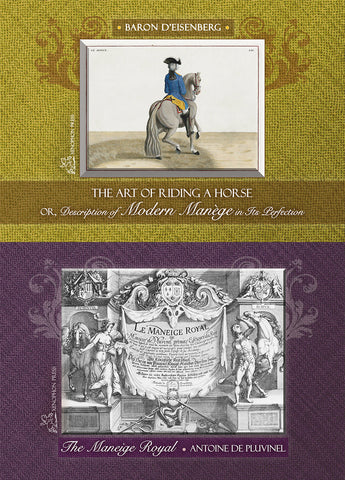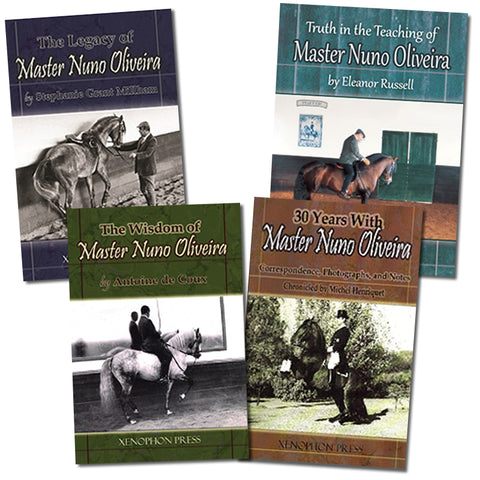Eighteenth Century Equitation: Military Equitation; A Method of Breaking Horses and Teaching Soldiers to Ride & A Treatise on Military Equitation
Eighteenth Century Equitation presents two classic English works on the training of military riders and horsesat the start of the Napoleonic era, when “the cavalry arm,” as Louis A. DiMarco has observed, “reached the highest point of its popular and professional acclaim”— A Method of Breaking Horses, and Teaching Soldiers to Ride, by Henry Herbert, 10th Earl of Pembroke, and A Treatise on Military Equitation, by William Tyndale.
Written for riding masters and officers in British service, these clear and concise manuals will provide contemporary equestrian readers with historical knowledge of military theory as practiced by the light cavalry, historical insight on a moment in the evolution of horsemanship as influenced by mounted warfare, and sound principles and lessons still valuable for the improvement of horsemanship and equitation—professional or amateur, military or civilian.
Xenophon Press is pleased to present these important works by the Earl of Pembroke and William Tyndale in facsimile, reproducing the fourth and final edition of Pembroke’s work and the only edition of Tyndale’s. The texts are complete with their original 22 plates, and are accompanied with an introduction and explanatory notes by Dr. Charles Caramello, John H. Daniels Fellow at the National Sporting Library and Museum in Middleburg, Virginia.
From Charles Carmello's Introduction:
“Pembroke urges reason and moderation, patience and gentleness, and simplicity of means as the right tools for educating horses and the soldiers who ride them.
"Pembroke develops recurring themes. He repeatedly notes that scale, urgency, and lack of resources constrain the proper training of cavalrymen and horses, particularly with respect to the teaching of refined techniques. He also repeatedly notes, however, that field maneuvers require precise use of shoulder-in, haunches-in, and rein-back in “opening and closing of files,” and that close combat requires agile one-handed riding, since the right hand “carries the sword, which is a sufficient business for it.” Finally, as the reader will see, Pembroke has much to say about bitting and shoeing, saddlery and weaponry.
"Tyndale’s book, A Treatise on Military Equitation (1797), published in one edition only, starts with the same premise as Pembroke’s: “the present system [of horsemanship], which is much the same throughout the cavalry, is contrary to every principle of true horsemanship, both in the instruction of man and horse.”
"In The Development of Modern Riding (1962), the distinguished horseman Vladimir Littauer noted that “Pembroke’s is a very small and unimportant book,” particularly when compared to the great earlier 18th century masterworks of dressage. Rather than dismiss Pembroke, however, Littauer praised him as “a follower of the French school [of dressage who] was practical enough to suggest its considerable simplification for the army,” who successfully repurposed manège training for the military work at hand (Littauer, 90-91). What Pembroke did for the French school, in effect, Tyndale did for Pembroke: he further simplified the simplifier.
"What, though, will 21st-century amateur equestrians gain from reading two treatises on military equitation written for 18th-century professional soldiers? They will gain historical knowledge of military theory and practice in 18th century England as reflected in the discipline of light cavalry. They will gain historical insight to a moment in the evolution of horsemanship as it was influenced by mounted warfare. And they will find sound principles and lessons to apply to the improvement of their own horsemanship and equitation. In other words, these treatises offer equestrian readers both intellectual and practical value.
"Equestrian readers of Pembroke and Tyndale will engage with two eminently sensible military horsemen, learn from two seasoned trainers of horses and riders, and, if lucky, discover something new and unexpected about equestrian sport."
ISBN 978-1948717038
302 PAGES
HARDCOVER





